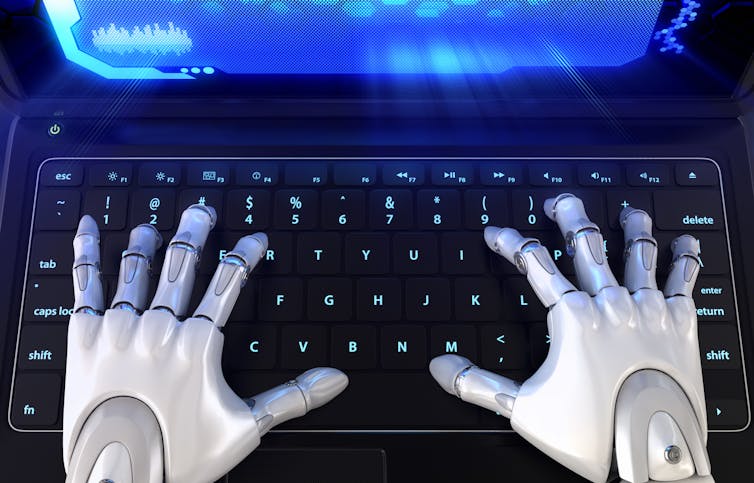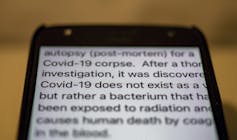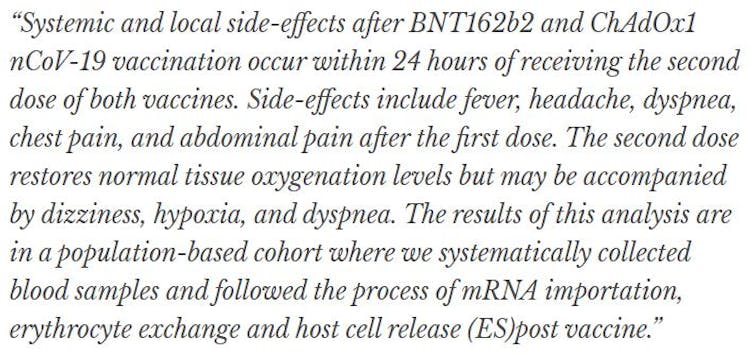
Experts in autocracies have pointed out that it is, unfortunately, easy to slip into normalizing the tyrant, hence it is important to hang on to outrage. These incidents which seem to call for the efforts of the Greek Furies (Erinyes) to come and deal with them will, I hope, help with that. As a reminder, though no one really knows how many there were supposed to be, the three names we have are Alecto, Megaera, and Tisiphone. These roughly translate as “unceasing,” “grudging,” and “vengeful destruction.”
I’m afraid I’ve been sitting on this one for a while … and it’s not a new topic, but one the Furies and I have looked at in the past, more than once. And I’m sure we will again. The misuse of technology – any technology – is a situation in which those determined to subvert it for their own ends are in a constant race with those equally determined to to keep it useful and beneficial. So here’s the current state of the art.
================================================================
Study shows AI-generated fake reports fool experts

iLexx/iStock via Getty Images
Priyanka Ranade, University of Maryland, Baltimore County; Anupam Joshi, University of Maryland, Baltimore County, and Tim Finin, University of Maryland, Baltimore County
Takeaways
· AIs can generate fake reports that are convincing enough to trick cybersecurity experts.
· If widely used, these AIs could hinder efforts to defend against cyberattacks.
· These systems could set off an AI arms race between misinformation generators and detectors.
If you use such social media websites as Facebook and Twitter, you may have come across posts flagged with warnings about misinformation. So far, most misinformation – flagged and unflagged – has been aimed at the general public. Imagine the possibility of misinformation – information that is false or misleading – in scientific and technical fields like cybersecurity, public safety and medicine.
There is growing concern about misinformation spreading in these critical fields as a result of common biases and practices in publishing scientific literature, even in peer-reviewed research papers. As a graduate student and as faculty members doing research in cybersecurity, we studied a new avenue of misinformation in the scientific community. We found that it’s possible for artificial intelligence systems to generate false information in critical fields like medicine and defense that is convincing enough to fool experts.
General misinformation often aims to tarnish the reputation of companies or public figures. Misinformation within communities of expertise has the potential for scary outcomes such as delivering incorrect medical advice to doctors and patients. This could put lives at risk.
To test this threat, we studied the impacts of spreading misinformation in the cybersecurity and medical communities. We used artificial intelligence models dubbed transformers to generate false cybersecurity news and COVID-19 medical studies and presented the cybersecurity misinformation to cybersecurity experts for testing. We found that transformer-generated misinformation was able to fool cybersecurity experts.
Transformers
Much of the technology used to identify and manage misinformation is powered by artificial intelligence. AI allows computer scientists to fact-check large amounts of misinformation quickly, given that there’s too much for people to detect without the help of technology. Although AI helps people detect misinformation, it has ironically also been used to produce misinformation in recent years.

AP Photo/Ashwini Bhatia
Transformers, like BERT from Google and GPT from OpenAI, use natural language processing to understand text and produce translations, summaries and interpretations. They have been used in such tasks as storytelling and answering questions, pushing the boundaries of machines displaying humanlike capabilities in generating text.
Transformers have aided Google and other technology companies by improving their search engines and have helped the general public in combating such common problems as battling writer’s block.
Transformers can also be used for malevolent purposes. Social networks like Facebook and Twitter have already faced the challenges of AI-generated fake news across platforms.
Critical misinformation
Our research shows that transformers also pose a misinformation threat in medicine and cybersecurity. To illustrate how serious this is, we fine-tuned the GPT-2 transformer model on open online sources discussing cybersecurity vulnerabilities and attack information. A cybersecurity vulnerability is the weakness of a computer system, and a cybersecurity attack is an act that exploits a vulnerability. For example, if a vulnerability is a weak Facebook password, an attack exploiting it would be a hacker figuring out your password and breaking into your account.
We then seeded the model with the sentence or phrase of an actual cyberthreat intelligence sample and had it generate the rest of the threat description. We presented this generated description to cyberthreat hunters, who sift through lots of information about cybersecurity threats. These professionals read the threat descriptions to identify potential attacks and adjust the defenses of their systems.
We were surprised by the results. The cybersecurity misinformation examples we generated were able to fool cyberthreat hunters, who are knowledgeable about all kinds of cybersecurity attacks and vulnerabilities. Imagine this scenario with a crucial piece of cyberthreat intelligence that involves the airline industry, which we generated in our study.

The Conversation, CC BY-ND
This misleading piece of information contains incorrect information concerning cyberattacks on airlines with sensitive real-time flight data. This false information could keep cyber analysts from addressing legitimate vulnerabilities in their systems by shifting their attention to fake software bugs. If a cyber analyst acts on the fake information in a real-world scenario, the airline in question could have faced a serious attack that exploits a real, unaddressed vulnerability.
A similar transformer-based model can generate information in the medical domain and potentially fool medical experts. During the COVID-19 pandemic, preprints of research papers that have not yet undergone a rigorous review are constantly being uploaded to such sites as medrXiv. They are not only being described in the press but are being used to make public health decisions. Consider the following, which is not real but generated by our model after minimal fine-tuning of the default GPT-2 on some COVID-19-related papers.

The Conversation, CC BY-ND
The model was able to generate complete sentences and form an abstract allegedly describing the side effects of COVID-19 vaccinations and the experiments that were conducted. This is troubling both for medical researchers, who consistently rely on accurate information to make informed decisions, and for members of the general public, who often rely on public news to learn about critical health information. If accepted as accurate, this kind of misinformation could put lives at risk by misdirecting the efforts of scientists conducting biomedical research.
[The Conversation’s most important coronavirus headlines, weekly in a science newsletter]
An AI misinformation arms race?
Although examples like these from our study can be fact-checked, transformer-generated misinformation hinders such industries as health care and cybersecurity in adopting AI to help with information overload. For example, automated systems are being developed to extract data from cyberthreat intelligence that is then used to inform and train automated systems to recognize possible attacks. If these automated systems process such false cybersecurity text, they will be less effective at detecting true threats.
We believe the result could be an arms race as people spreading misinformation develop better ways to create false information in response to effective ways to recognize it.
Cybersecurity researchers continuously study ways to detect misinformation in different domains. Understanding how to automatically generate misinformation helps in understanding how to recognize it. For example, automatically generated information often has subtle grammatical mistakes that systems can be trained to detect. Systems can also cross-correlate information from multiple sources and identify claims lacking substantial support from other sources.
Ultimately, everyone should be more vigilant about what information is trustworthy and be aware that hackers exploit people’s credulity, especially if the information is not from reputable news sources or published scientific work.![]()
Priyanka Ranade, PhD Student in Computer Science and Electrical Engineering, University of Maryland, Baltimore County; Anupam Joshi, Professor of Computer Science & Electrical Engineering, University of Maryland, Baltimore County, and Tim Finin, Professor of Computer Science and Electrical Engineering, University of Maryland, Baltimore County
This article is republished from The Conversation under a Creative Commons license. Read the original article.
================================================================
Alecto, Megaera, and Tisiphone, I can certainly see how these examples could fool even professionals … and particularly the medical exacmple on side effects, simply because side effects are so unpredictable. But misstatements which in theory should have been more obvious have also fooled experts. And fooling experts can certainly have disastrous results. If there is any way we can all be on our guard any more than we already are, then dear Furies, please help us to do so.
The Furies and I will be back.
4 Responses to “Everyday Erinyes #271”
Sorry, the comment form is closed at this time.

Holy interface, Batman!
Thank you, Joanne, that is really interesting. I saw what I believed, at the moment, to be a slight grammatical glitch in the AI format, but did not realize that it might be a diagnostic thing…if I was right, in the first place.
Sigh, one more thing we need to be on our guard against. If experts are fooled by these fake AI reports, who are we to see through them? Will we now have to doubt everything we read or hear?
Great and very important information, Joanne.
Scary reading how AI generated reports can fool these experts.
After reading this article it sure is going to make people “think twice” about what they read or hear. Questioning whether it’s fake or factual?
Crazy that our world has to end up going that direction, but I feel it’s better to be safe than sorry.
Thanks again Joanne for another eye opener article.
Thanks Joanne–science and research is designed to catch mistakes, misinformation yet sometimes it fails like with the autism-vaccine research that although withdrawn formally, still has a ton of believers pushing it as true. There was one other in a mental health area with data falsified that also led to accountability yet was before the internet and didn’t get as much media attention.
Any mistake or misinformation can have huge consequences.